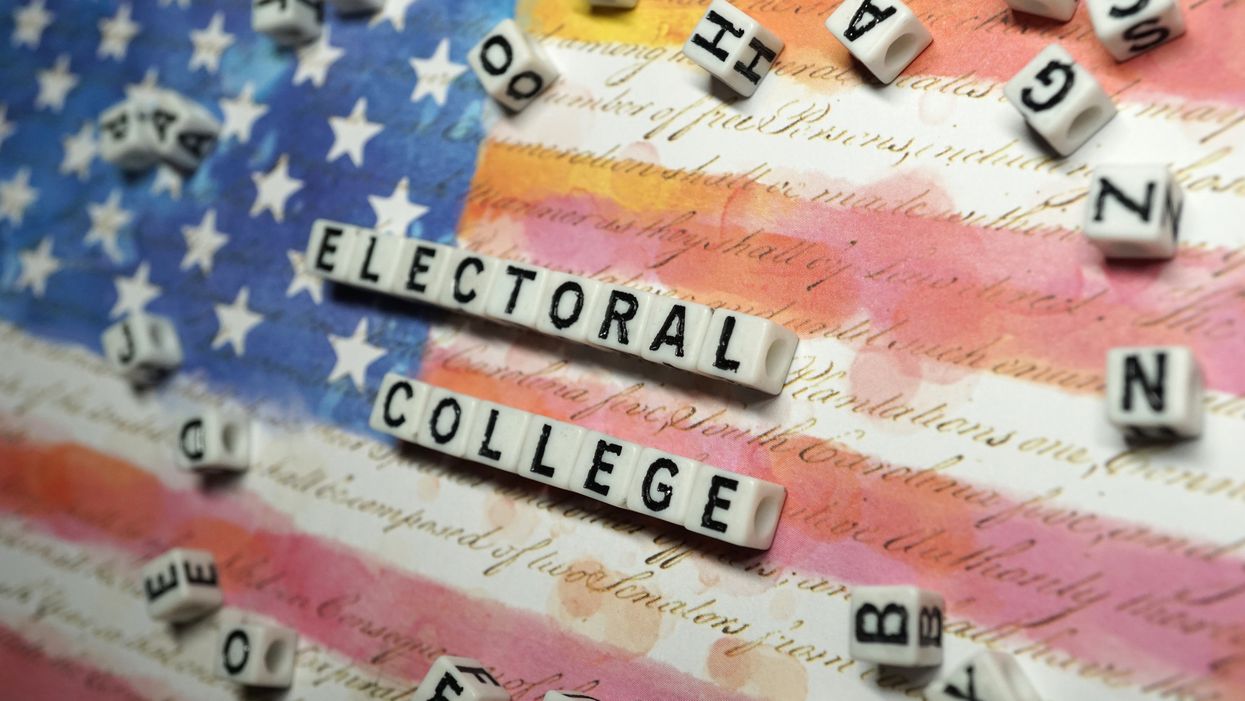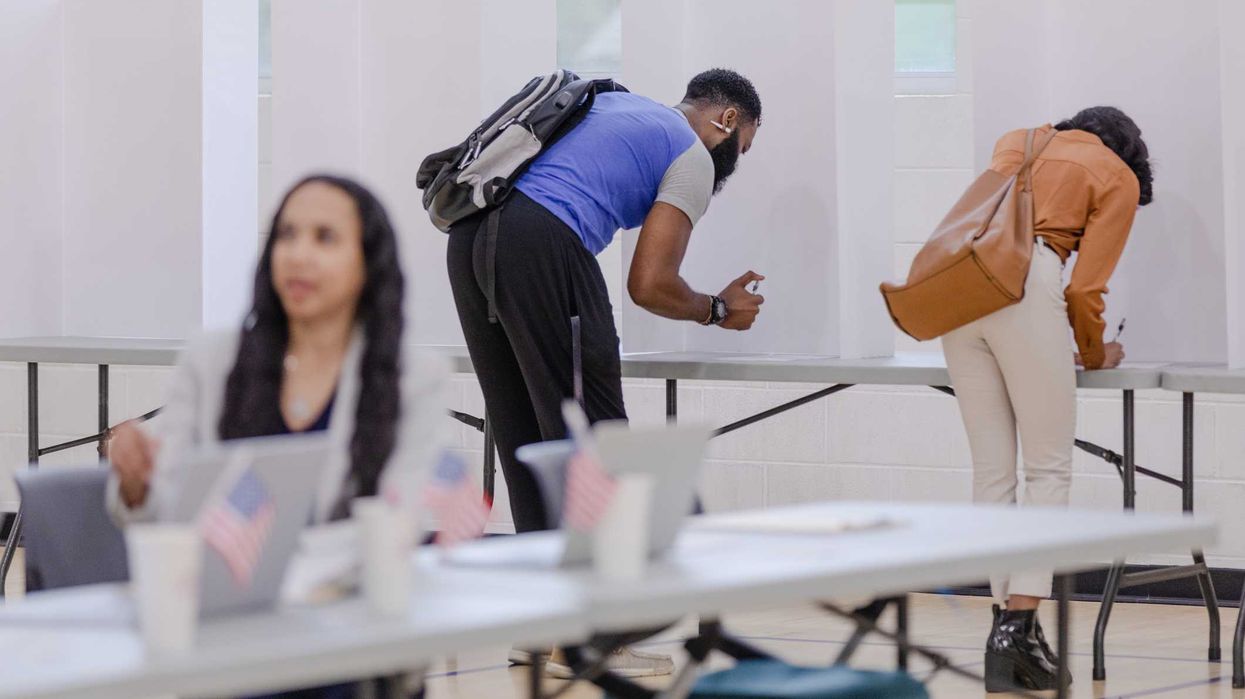LaRue is former deputy director of the Eisenhower Institute and of the American Society of International Law. This piece is adapted from his article for a forthcoming issue of the University of Idaho Law Review.
Listening last month, as Supreme Court proceedings were broadcast live for the first time, was a treat. In the "faithless electors" case, however, the novelty contrasted with the likelihood that the court's decision this month won't change much about how we select the president.
Whether states can punish electors for changing their pledged votes is a minor issue in the plethora of Electoral College problems.
The court is addressing it because lower courts rendered contradictory verdicts for cases from Colorado and Washington. Yes, the original idea of the Founders is that the electors would act as a sort of board of trustees in choosing the president. But practice quickly evolved toward the current system, voters selecting electors. And we now have more than 200 years worth of experience with their service as our delegates, instead of trustees.
Even if the court decides electors can change their votes without consequence, that would not unleash the warned-of chaos of rogue electors conspiring or being bribed to change their votes — and with them the election's outcome.
Faithless electors are already rare and inconsequential. Of more than 23,000 votes cast since 1804, fewer than 100 can be considered faithless. Some peg the number at just 16. They will become even more rare, regardless of the court's decision or any state attempts to tighten laws binding them to vote the will of the electorate. Each political party will simply undertake deeper vetting to ensure its electors support its nominee.
The Electoral College's insidious erosion of democracy in each election and its capacity to cause dramatic chaos should concern us more.
Every four years it violates political equality by weighing each vote differently, based only on the state in which a citizen lives. Then, 10 percent of the time it delivers a misfire election, in which the winner of the most popular votes loses the election. This has occurred in five of the 49 elections since 1824, when the popular vote was first recorded.
Perhaps most damningly, the Electoral College disincentivizes voting. Too many states — red and blue, populous or not — are considered "safe" for one of the parties, which depresses turnout. Republicans and Democrats alike in such states too often can think "My vote actually won't make a difference" and stay home. In 2012, turnout in non-swing states was 11 percent below that in the battleground states. That only a handful are perceived to matter was demonstrated when Democrats Hillary Clinton and Tim Kaine campaigned in just 14 states four years ago.
Finally, the Electoral College was not the result of Founders' wisdom — but of their desire to finish and go home. It was a poorly conceived, last-minute transactional compromise. Its initial format failed outright after just four elections, and it has remained a thorn in democracy's side since being slightly tweaked with the 12th Amendment in 1803. It does not merit repair now.
Replacing it with "just" the popular vote is not viable, either, because we use winner-take-all plurality voting. In 19 elections in the last two centuries — two out of every five — a majority has voted for the losing candidates. Our leaky two-party system has meant two modern presidents have been elected with just 43 percent support, Richard Nixon in 1968 and Bill Clinton in 1992.
The Electoral College also minimizes the impact of third parties; if it is removed, more independent candidates would stay in the race through Election Day and the country would experience continued and even smaller plurality winners. The resulting destabilization would require yet another fix.
Majority rule — "the fundamental principle of free government," according to James Madison — should be our goal. Painfully and ironically, though, we do not pursue that when voting for president. Achieving it would require using some form of runoff, whether a second round for the top two vote-getters or, more plausibly, a version of ranked-choice voting.
The National Popular Vote Interstate Compact, which would have states award their electors to the national popular vote winner, does not get us there. I applaud its aspirations, but it is destined to fail — and not because it has a partisan cast (only blue states are participating so far), permits plurality winners and is potentially unconstitutional.
Its inherent instability would be its fatal flaw.
First, by retaining the Electoral College structure, the compact signals to voters their state identity still matters — contradicting the compact's primary message. Then, if a participating state's voters support the loser of the nationwide vote, strong dissonance will occur when their electoral votes are awarded to the winner. States will respond by withdrawing from the compact, maybe dropping it below the 270 electoral votes required for activation.
This flaw will get closer scrutiny should the compact get closer to adoption. It is embraced now by 16 states plus D.C., representing196 votes. If the number reaches the 240s, say, the final states to get over the top will never materialize — and some participating now will likely drop out.
The Electoral College's ongoing damage to our democracy needs to be stopped. We need an election system that elects a president with majority popular vote support. And since we cannot go around the Constitution to correct a constitutional problem, this means pursuing an amendment, arduous as it appears today.
Getting such an amendment through Congress with two-thirds majorities, then ratified by 38 states, is likely to require a kick in the constitutional pants — from more frequent misfire elections where the Electoral College winner and popular vote winner don't match (most likely), an election decided by the House after no candidate secures 270 votes (less likely) or, if the Supreme Court allows it in coming days, enough electors changing their votes to change the outcome (least likely).
This could take many years to play out. But the sooner we give future generations the opportunity to celebrate the closing of the Electoral College, the better.



















